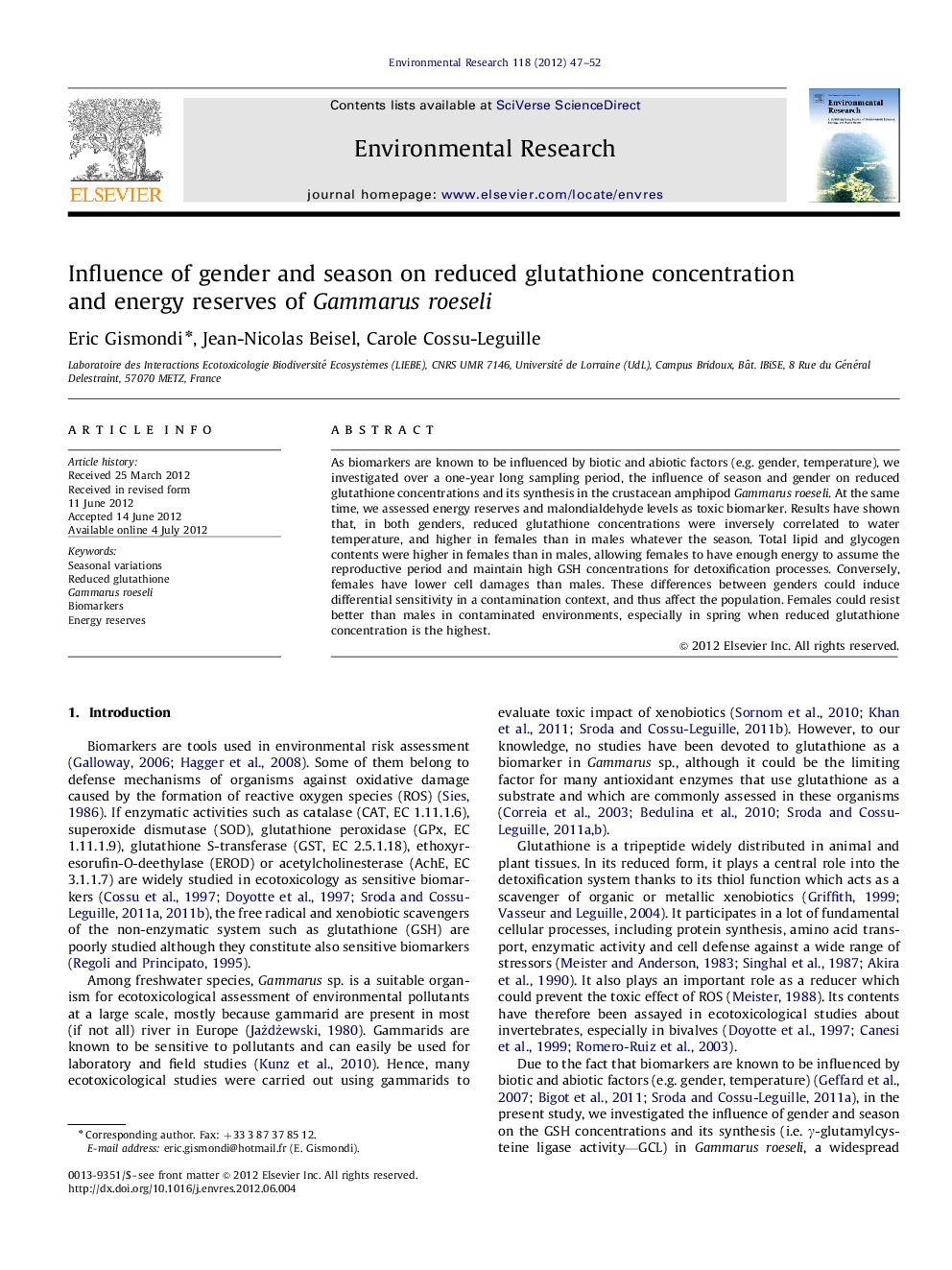| Article ID | Journal | Published Year | Pages | File Type |
|---|---|---|---|---|
| 4469981 | Environmental Research | 2012 | 6 Pages |
As biomarkers are known to be influenced by biotic and abiotic factors (e.g. gender, temperature), we investigated over a one-year long sampling period, the influence of season and gender on reduced glutathione concentrations and its synthesis in the crustacean amphipod Gammarus roeseli. At the same time, we assessed energy reserves and malondialdehyde levels as toxic biomarker. Results have shown that, in both genders, reduced glutathione concentrations were inversely correlated to water temperature, and higher in females than in males whatever the season. Total lipid and glycogen contents were higher in females than in males, allowing females to have enough energy to assume the reproductive period and maintain high GSH concentrations for detoxification processes. Conversely, females have lower cell damages than males. These differences between genders could induce differential sensitivity in a contamination context, and thus affect the population. Females could resist better than males in contaminated environments, especially in spring when reduced glutathione concentration is the highest.
► We investigated the seasonal variations of reduced glutathione in G. roeseli. ► Reduced glutathione is a key compound in detoxification processes few studied. ► Results revealed gender and seasonal influences on energy and defense parameters.
